Sep 19, 2018
Making the EHR Work: Rural Healthcare Organizations Use Data Extraction to Improve Patient Care
Related Article
EHR
Interoperability: HIT Needs Across the Healthcare
Continuum
After the national multibillion-dollar investment in health information technology (HIT) over the past decade, rural healthcare organizations are now exploring how electronic health record (EHR) data can deliver on its promise of improving patient care.
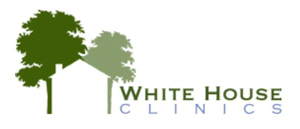 In rural Appalachian Kentucky, the White House Clinics
(WHCs) stand as an example of Federally Qualified Health
Centers (FQHCs) making their EHR work for them by pairing
it with a data analytics software program. Stephanie
Moore is CEO of WHCs' 9 clinics and 255 employees. With 4
dedicated IT staff, she says extracting data is a
process, especially when looking at quality measures.
In rural Appalachian Kentucky, the White House Clinics
(WHCs) stand as an example of Federally Qualified Health
Centers (FQHCs) making their EHR work for them by pairing
it with a data analytics software program. Stephanie
Moore is CEO of WHCs' 9 clinics and 255 employees. With 4
dedicated IT staff, she says extracting data is a
process, especially when looking at quality measures.
“The beauty of these HIT products is the ability to build basic software concepts so that a measure can be extracted from the EHR and be available for many users,” Moore says. “Depending on who's looking at that measure, it can be sliced and diced or even analyzed using another variable. If I sit down at my computer right now, I can look to see how we're performing on a particular measure in this moment. I can also pull it by provider or by patients who aren't keeping follow-up. But it's tricky. And it's certainly more than a counting exercise. For many measures, that's not enough. Sometimes it's just as important to factor into the equation the patients that need to be excluded from that measure.”
Sometimes it's just as important to factor into the equation the patients that need to be excluded from that measure.
Specifically, WHCs use their EHR to improve preventive screening and immunization rates. For example, with their new office-based intervention, the proactive office encounter, breast cancer screening rates increased by 40% and colorectal cancer screening rates increased by 46%. These results have even been published in academic journals.
Though Moore acknowledges that EHR data extraction like this is an important administrative tool, allowing her to know exactly what's happening with certain measures at any given moment, she believes it's still human problem-solving that turns extracted data into something that makes a difference for WHCs' patients.
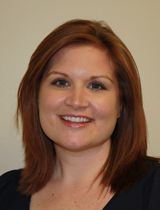
“The important part of our success came after we looked at baseline screening rates,” she says. “We thought through the reality of our patients' lives. We began to understand that, though providing preventive services are a priority for us, prevention is not a priority for patients. So we decided if we know what prevention can offer, we need to make it a very high priority. That means we say to our patients, 'This is so important that, even though you're here for another reason today, we'd like to offer preventive services right now. We don't want you to have to come back for another appointment.' Pushing for prevention during visits for acute illness demonstrates our value for our patients' time while emphasizing the importance of the screening recommendation.”
However, some rural organizations might be less able to extract EHR data to drive care improvements. A 2018 study using 2014 Healthcare Information and Management Systems Society's (HIMSS) ambulatory practice survey data reviewed EHR-based functionality in ambulatory care settings. Researchers compared specially designed HIT functionality measures and discovered that 73% of practices were not using EHR technologies to their full capability. Nearly 40% (N=11,706) of these organizations were classified as “under-users” with minimal EHR use and its associated HIT functionality. Rural differences became apparent when researchers noted that under-user practices were “more likely to be of smaller size, situated in the West, and located outside a metropolitan area.”
Data Analytics in Small, Rural, and Critical Access Hospitals
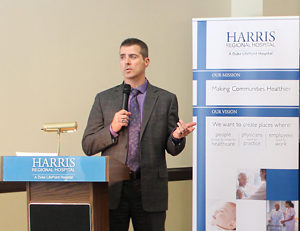
Moving from the rural ambulatory setting into the acute care world, Harris Regional Hospital (HRH), a rural hospital in western North Carolina, is also having success using EHR data analytics to improve patient care. In June 2018, HRH published Managing What Is Measured: A Rural Hospital's Experience in Reducing Patient Harm in the Journal of Healthcare Quality. Using its EHR data for quality improvement projects, its study shares steps of a “Zero Harm” project that achieved an 82% change in number of harm events in the short interval of two years. Like Kentucky's WHCs, HRH uses a commercial data analytics product to extract EHR data for multiple clinical and administrative uses.
Steve Heatherly is the CEO of HRH and nearby Swain Community Hospital, a Critical Access Hospital (CAH), both acquired by Duke LifePoint Healthcare in 2014. He emphasizes that the prime focus of a quality project like this is not just data extraction but the “human focus on the efforts of care processes that in turn actually impact outcomes.” He says that a big part of their project included steps dedicated to review clinical documentation (standardized word choices to describe clinical information) and coding (assigning ICD-10 numerical codes to clinical information).
Speaking as an administrator, there's a lot of what I call 'noise' around data.
“Speaking as an administrator, there's a lot of what I call 'noise' around data,” Heatherly says. “While the clinical quality team is reviewing these events in real time, you're also finding out where the noise in the data is located. Sometimes something gets coded as a harm event and is later demonstrated to be miscoding. In my view, making sure we had all of that parsed out, making sure we had a solid process in place so that we understood when something was coding/documentation noise versus something we must change in our clinical process was the biggest challenge. It's something you can never take your eyes off.
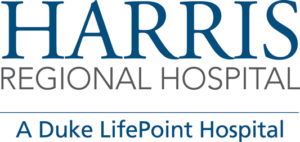 “Prior
to becoming a part of Duke LifePoint, I don't think that
we could have done this work on our own as a small, rural
hospital,” he says. “As our board was
going through the decision-making process about that
relationship, they considered the development of clinical
services for the rural community that we serve, the
financial stability that comes along with being a part of
a larger system, and, equally important, becoming part of
a system where there was a whole arm focused on improving
quality of care and experience for our patients and their
families.”
“Prior
to becoming a part of Duke LifePoint, I don't think that
we could have done this work on our own as a small, rural
hospital,” he says. “As our board was
going through the decision-making process about that
relationship, they considered the development of clinical
services for the rural community that we serve, the
financial stability that comes along with being a part of
a larger system, and, equally important, becoming part of
a system where there was a whole arm focused on improving
quality of care and experience for our patients and their
families.”
Heatherly says they have a robust local IT team of around 20 individuals, also shared with Swain, allowing them to do other process improvement projects based on data extraction and analysis, for example, emergency room patient throughput.
“Sixty percent of our admissions come through our Emergency Department,” Heatherly says. “Data gives us a sense of how that patient matriculates from presenting to the ED to getting an inpatient bed. We measure all the steps along the way: how long did it take to get triaged, how long until seen by a provider, how long did they wait in the department before getting upstairs to a bed. On a daily basis, that EHR data helps us find bottlenecks in our system. That's important because patients coming to our ER are the sickest of the sick. These are the patients needing admission and the most uncomfortable place we can have them is in our emergency department. We want to minimize the amount of time they spend there and get them into a bed where the recuperation process begins. This is data we focus on daily.”
It Takes Three: Administrator, Clinician, and HIT Specialist
 Both Moore and
Heatherly emphasize the key role of their HIT specialists
when using data to improve patient care. As an HIT
educator, Dr. Ryan Sandefer, the College of St.
Scholastica's Department of Health Informatics and
Information Management's former chair and now the
Assistant Vice President of Academic Affairs, says this
partnership is why keeping a curriculum focused on future
HIT needs is a priority for their organization.
Both Moore and
Heatherly emphasize the key role of their HIT specialists
when using data to improve patient care. As an HIT
educator, Dr. Ryan Sandefer, the College of St.
Scholastica's Department of Health Informatics and
Information Management's former chair and now the
Assistant Vice President of Academic Affairs, says this
partnership is why keeping a curriculum focused on future
HIT needs is a priority for their organization.
“I firmly believe that we're moving in the right direction,” Sandefer says. “Now that we have ample technology adoption, we've created a foundation in this country with the ability to collect information with the right intent to engage patients more effectively. But with implementation and adoption behind us, we're really just back at the starting line. Now we have to have the right mindset to handle the massive amounts of data that we're collecting.”
…with implementation and adoption behind us, we're really just back at the starting line.
Because of its involvement with one of the Regional Extension Centers (RECs), a now-completed program designed to assist providers with EHR adoption and meaningful use activities, Sandefer shares that his institution was able to have an implementation and policy “front-seat rural learning experience,” an experience that now helps them with curricula development to address the HIT workforce needs of these healthcare organizations.
“We don't believe our students need to be software developers, but they must have technology expertise associated with software,” he says. “Also, our advisory committees and our employers are coming to us saying, 'We need people who understand data technology and somebody who can work interprofessionally to address both clinical and administrative needs, whether it's impacting revenue, care quality, or even workplace satisfaction.' These are critical elements.”
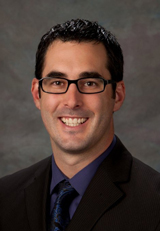
Sandefer points out that for graduates, “data savvy” skill sets are increasingly important so they can ask the right questions about technology adoption, ask questions that produce clean data, and even determine which questions can be answered through data. He says graduates seeking employment in rural – or any – healthcare organization must also be able to manage technology projects since organizations are shifting very quickly now: either replacing or enhancing technology or implementing system upgrades, largely due to payer requirements.
“We really beefed up our use of different software products, keeping in mind that our graduates can adopt these open source no-cost tools in rural areas where finances are high priority,” Sandefer explains. “We're getting feedback that they're immediately able to use these tools within their organizations and having real impact for patients and their employers.”

